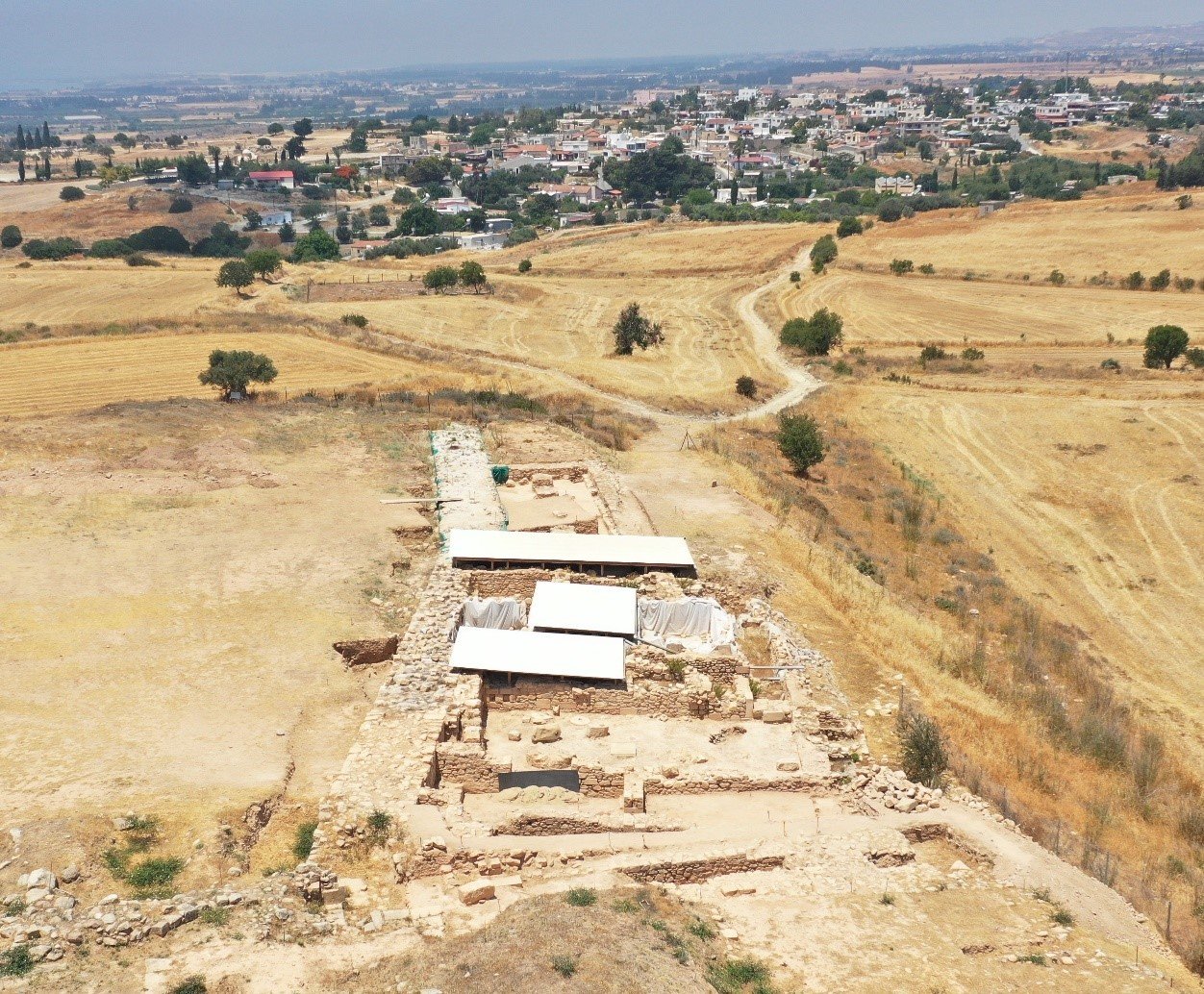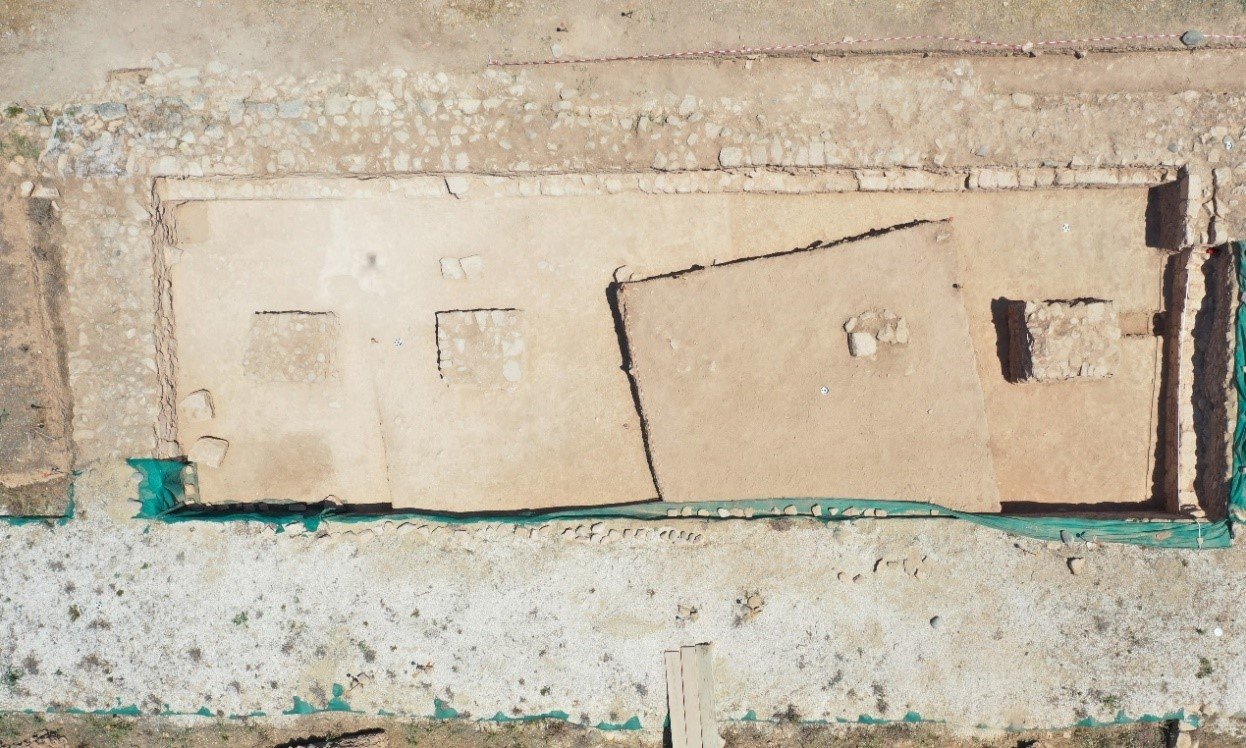The plateau of Hadjiabdoulla east of Kouklia, with its monumental workshop complex and a palatial complex to the east, was the acropolis of the ancient city of Paphos in the 5th and 4th c. BC, the antiquities department said on Friday announcing the results of further excavations by the Research Unit of the University of Cyprus.
The 2021 digs, held within the framework of the Palaepaphos Urban Landscape Project which has been running since 2006 under the direction of Professor Maria Iakovou, focused on the workshop complex that was identified running along the north side of the plateau of Hadjiabdoulla, to the east of the temple of Aphrodite and modern-day Kouklia village.
In total, 10 units have been revealed, covering an area of 1250 m². (Top image). All units are situated on the external side of the enclosure wall running down the north slope (Image 2).
Photo: Enclosure wall and units on the Hadjiabdoulla slope. Kouklia village in the background. UAV plan: Κ. Themistokleous.
The main objective of the 2021 works was to investigate the relationship between the workshops and the palatial complex, situated to the east.
Although this complex was identified by a British Mission in the 1950s, its excavation and study have not yet been completed.
“However, the two impressive public monuments, in combination with the epigraphic evidence that have recently been unearthed in the workshops, allow us to identify the plateau as the acropolis of the ancient city of Paphos in the 5th and 4th c. BC,” it said.
The excavation of the easternmost workshop unit (Unit 9) and the cleaning of the palace’s west enclosure wall, situated at a 1-3 metre distance, revoked the hypothesis that there was access and direct contact between the two complexes.
Although based on the pottery analysis both monuments seem to belong to the Cypro-Classical period, it is beginning to become clear that the construction of the palace predates that of the workshops.
At the same time, Unit 10 was revealed, in the west part of the workshops. This unit is of a completely different architectural design: it is a very large, undivided hall (Image 3) (16.20 m. length and 5.30 m. width) covering a total space of 85.8 m².
Photo: Unit 10 with pillars
This large, impressive space is filled with large pillars (around 1X1 m.) that are placed near the east and west buttress and other have been found in the space between (Image 4).
Photo: Unit 10 with two pillars of the west side
It is obvious that the pillars were meant to support a second floor. However, the material recovered from Unit 10 leaves no doubt that this building project was never completed. Although Unit 10 covers an extensive area, very few stones and mudbricks were found, which does not substantiate the existence of a collapsed second floor.
Also, the floors of Unit 10 do not seem to show any evidence of use and they were not found covered by building material (stones, mudbrick), as was the case in other excavated units.










Click here to change your cookie preferences